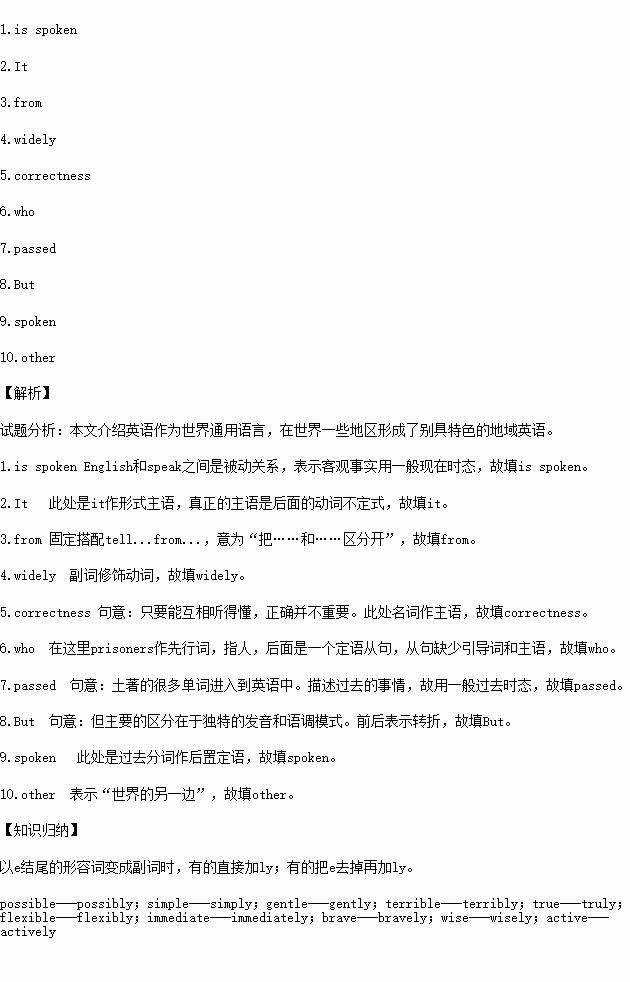题目内容
阅读下面材料,在空白处填入适当的内容(1个单词)或括号内单词的正确形式。
There are as many varieties of English as there are speakers of it. English 1. (speak) as an official language in more than 60 countries, and it can sound very different from place to place. 2. is easy for us to tell British English 3. American English.
There is not really a standard form that everyone can agree on and English is 4.(wide) spoken, so it is hard to tell which English is correct. As long as speakers can understand each other, 5.(correct) doesn't matter.
Australian English has traces of both Irish and cockney speech patterns, because the first speakers were prisoners 6. came from all over Britain. Many of the Aboriginal words 7. (pass) into the language. 8. the main differences lie in the individual sounds and intonation patterns.
But this is not the case, the variety of English 9.(speak) in Jamaica has some of the grammatical features of the American languages.
On the 10. side of the world, in Singapore, English is spoken by about half the population. Sentences often end with the word lah. English here has been influenced especially by Malay and the Chinese dialect Hokkien.

